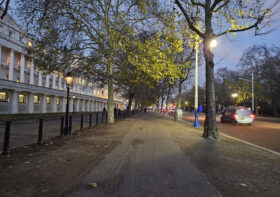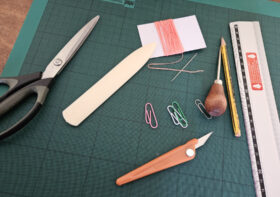Marion Tracy spills the beans
On becoming a poet in Australia, putting images in the wrong order, and John Ashbery’s baskets: in conversation with Marion Tracy.
When I asked poet friend Marion Tracy if she’d like to guest on my blog, we both had several ideas of what form it might take. We met, and chatted through it – I’ve known Marion for a while and always admired her forthrightness and ability to ‘cut to the chase’ in workshops and with poetry generally, as well as her skill as a poet. I knew whatever she wanted to share would be intriguing and different. So, we had a conversation, and here’s what came out of it. It’s a pleasure to have Marion here on the blog and I hope you enjoy this as much as I did!
RH: It’s the obvious question I know, but could you tell us a bit about how you got started writing poetry?
MT: I wrote a few poems for my school magazine and also wrote poems in my teens and early twenties. I then tried to tackle writing a novel while pregnant and realised how difficult that is. Then the pram in the hall did its inevitable thing.
When I first sat down in Australia, ten years ago now, to start my first poem, I had very little idea of what trying to be a poet entailed. I had taught Carol Ann Duffy’s poetry to A Level students but I didn’t even know that there were such things as poetry magazines let alone something called ‘contemporary poetry’.
Anyway, I called the poem ‘On first sitting down with a white sheet of paper’ then I changed ‘sitting down’ to ‘staring at’ since that was more true. My mind went completely blank and I thought what on earth will I write About?
So, talk us through the ‘learning curve’…
In Australia I joined a memoir group and then a writing group which included poetry so it just really grew from there – I do like an audience! The workshop leaders in Australia were excellent – although they knew very little about English poets – it was all American poets for them. But they gave good advice. For example, I was asked about a phrase in a poem and I replied that I put it in so the reader would understand. ‘No, never do that,’ they said, ‘always write for the most understanding and clever reader that you can imagine’.
Although the urge to explain never really goes away, I now enjoy jamming two images together and just laying them down. One of my self-taught techniques is an extreme version of what’s often called ‘flow writing’ – pick the best sentence, write more, and so on. What I like to do is: write an ordinary poem, highlight only the best images, put them together in the wrong order, add in a bit more here and there – job done!
Do you keep a notebook?
These days I’m surrounded by notebooks, about twenty or so at least. They’re full of ideas for poems, sometimes based on words from TV, radio, newspapers, conversations. For example, I was at home in Oz and the ‘Antiques Road Show’ was on, and I heard a clock expert use the word ‘escapement.’ I vaguely knew it was something to do with the mechanism of time and thought about Time escaping, or someone trying to escape from Time. It was a pig to write because I decided that time would be masculine with simple rhyme and the escapee would be feminine with long prose lines. About seven years later it was published by Stand magazine (after it went off to and back from eight other magazines).
Words/phrases I’ve got queuing up now include wasps’ nest, ghosted, under the bridge, horse headed mummers, ruler of the spirits, the remembered present, butcher birds, the chorus, incognito and etc etc to the crack of doom. I collect little techniques I notice too but that’s another story.
Goodness! I feel like you’ve opened up a little window into your brain for us to peer through, what a privilege. Going back to the idea of putting images together ‘in the wrong order’ – tell us a bit more about that…
In a lecture on ‘Post Modernism and Difficult Poetry’, it was suggested we should cut our poems up, then throw them on the floor, then pick them up and keep them in the new random order. This is great fun and is surprisingly useful (as long as the ideas and phrases are all dancing around the same core) and of course I always cheat a little.
John Ashbery was mentioned at this point, and since I usually have no idea what his poems are saying or meaning I have decided that maybe, only perhaps, he has several baskets in his study labelled things like ‘random nature reference’, ‘philosophical ideas’, ‘place names’, ‘personal emotion’ and so forth. Then when he wants a poem he just picks a few from each basket and rearranges them.
It’s hard to tell if you’re being serious to be honest!
I am being serious – but as you may gather, I think it’s vital to ditch the over-solemn approach to poetry. A poem is a machine and some poets are better mechanics than others. I don’t believe in the Muse, although it’s a useful conceit (I think more about the Mood, as in, am I in it?) and I’m not keen on the idea of the poem somehow existing in the ether as the poet struggles to write it. ‘The poem wants to be…’ isn’t really helpful for me. It’s true that when the words are on the page they have a resonance beyond the poet’s intentions but ultimately it all, including the connections, comes from the poet’s brain.
It’s interesting to hear you say that – I suppose I agree with you to an extent, but perhaps the ‘Muse’ is just one way of describing the indescribable – the magic, the ‘where the hell did THAT come from’ thing.
How about sending poems out, dealing with rejections – any tips?
I wrote a lot of poems before I started sending off seriously and that was good because, like Mother Hubbard, I was able to not care too much – there was always another magazine, another poem. I treated it like the game it is – you win some, you lose some. Some magazines have a style or theme they are keen on so I sometimes would write with that in mind. But I became aware paradoxically that difference is highly valued, so if you try to fit in you will never be as good as you could be. Sometimes unusual poets have to create an audience for themselves.
OK, any final words of advice that you’d like to pass on?
Plenty, but here are a few thoughts: description does not make a poem. Anecdote does not make a poem. Description and anecdote and unusual words do not make a poem.
Hospitals, herons and hares are overused tropes (in other words, poetic clichés), also a bird flying into the blue at the end of a poem, also in fact epiphanies of all sorts, such as my final statement below…
A poem should be a wasp’s nest full of humming and resonance, words and ideas moving about randomly, crashing into each other – threatening.
Marion Tracy has two degrees in English Literature and was a lecturer in Colleges of Further Education. She lived in Australia for seven years where she started writing poetry. She is widely published in magazines and her pamphlet Giant in the Doorway (2012) was published by HappenStance Press. Marion’s first full collection Dreaming of Our Better Selves was published this year by Vanguard Editions.



Really insightful interview. It’s so good to read about the methods of other poets. Thank you Robin and Marion.